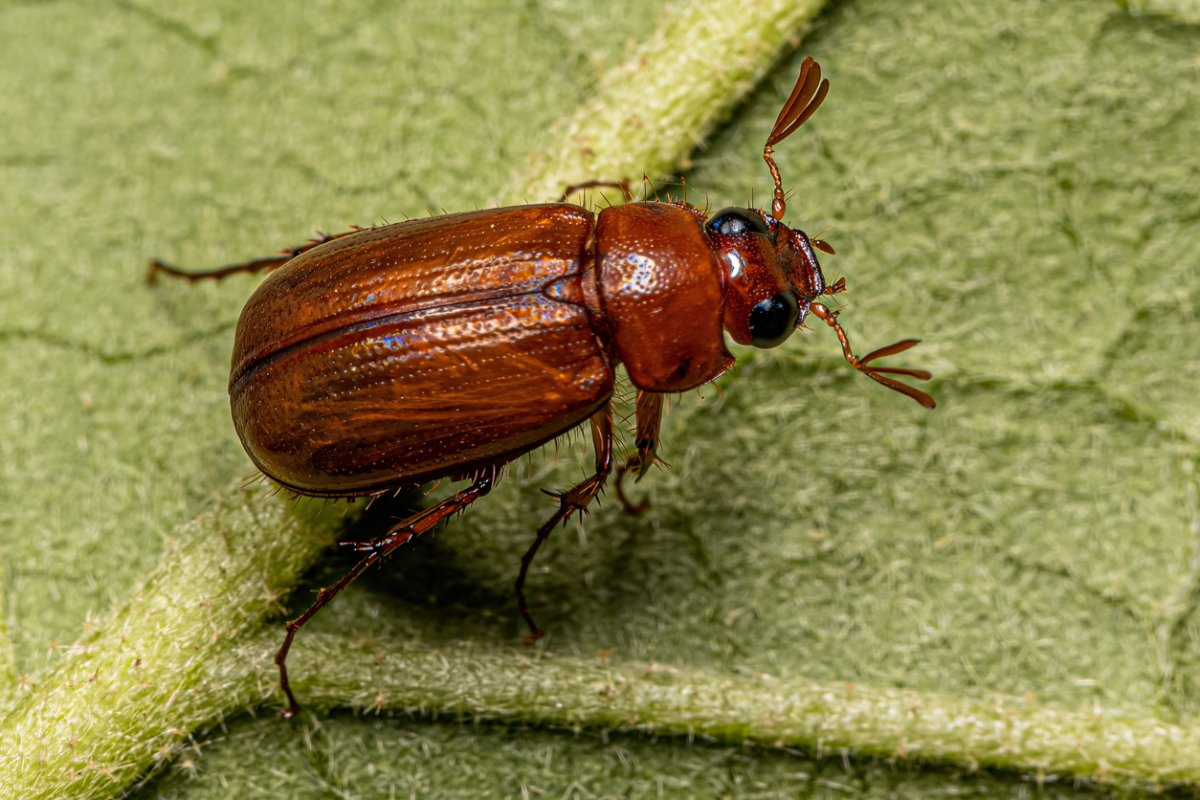

We may earn revenue from the products available on this page and participate in affiliate programs. Learn More ›
Despite their name, June bugs (Phyllophaga spp.) are active in adult form in May as well as June. Though the way they clumsily flit around can seem kind of comical, June bugs are no joke to your lawn and garden.
As adults, they feast on the leaves of trees and shrubs—roses are a particular favorite—leaving ragged holes in foliage. But their larval form, called a grub, does the most damage. Grubs live in soil and feed off the roots of plants, especially grass. The result is large brown patches of dead grass that easily separates from the soil in chunks or mats of turf.
You’ll typically see the damage during the late summer when the grubs are most active underground. To ascertain that June bugs are indeed the culprit, simply lift up a section of dead grass: If you see the slightly curled white grubs in the soil underneath, you know what is to blame. Once you’ve identified the problem, you can eliminate June bugs in both their larval and adult stages, often without costly chemical insecticides.
What are June bugs?
What exactly are June bug beetles? June beetles (genus Phyllophaga), also known as June bugs or May beetles, are members of a genus of nearly 300 species belonging to the Scarabaeidae family. They are commonly found across North America during late spring and early summer.
The five most common species of these members of the scarab family are the common June beetle (Phyllophaga crinita), ten-lined June beetle (Polyphylla decemlineata), the green June beetle (Cotinis nitida), the Japanese beetle (Popillia japonica), and the southern masked chafer (Cyclocephala lurida).
Adult June bugs primarily feed on foliage like leaves, flowers, and fruits and, as their name suggests, thrive in June due to warmer temperatures. June is also the mating season for these bugs, which contributes to their increased activity.
RELATED: How to Get Rid of Cucumber Beetles
How to Identify June Bugs and Their Grubs
To defeat one’s enemy, one must be able to identify him. Similar to other scarab beetles, adult June bugs have these identifiable characteristics:
- An oval shape and six legs with large antennae.
- They measure between 1/2-inch and 1 inch long.
- They are brown, black, or dark red in color.
- Their larvae—grubs—are about 1 inch long, with soft, bulbous, milky white bodies shaped like a “C” with a brown head and three sets of legs.
RELATED: Don’t Kill These 17 Beneficial Insects in Your Garden
Identifying Species of June Bugs
| Type of Bug | Description |
| Common June beetle (Phyllophaga crinitag) |
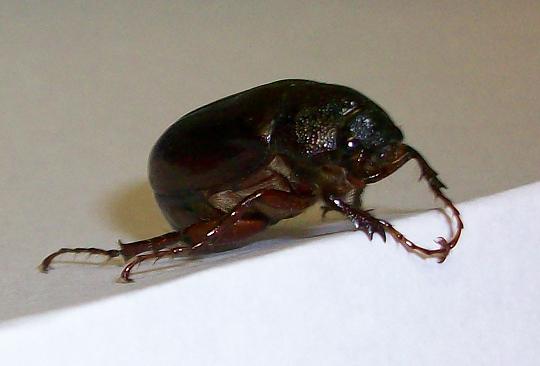
The most common beetle of the scarab family is the common June bug. Measuring 1 to 1 1/2 inches long, this bug features an oval-shaped body, small head, and prominent legs. It is commonly found in North America. Ten-lined June beetle (Polyphylla decemlineata)
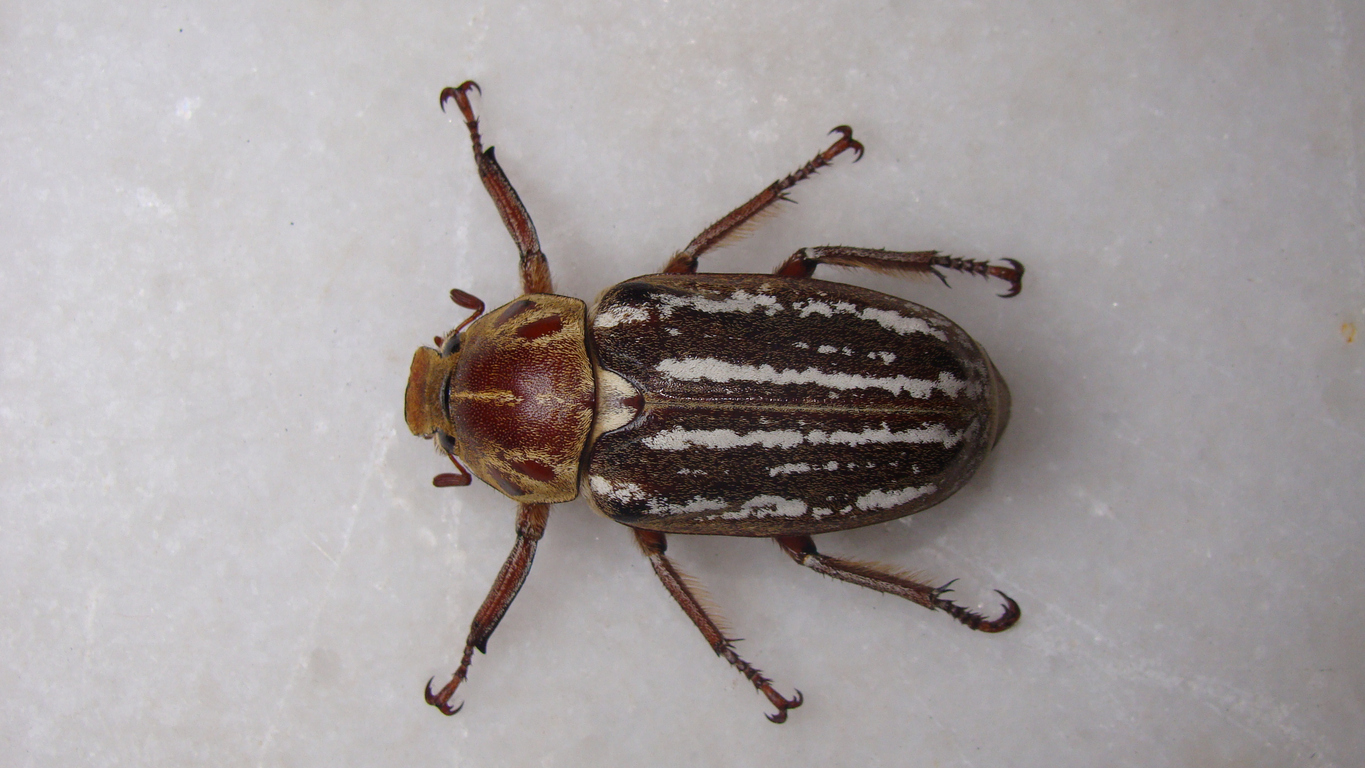
The ten-lined June beetle is found across North America, but is most commonly found in sandy soils. Adult ten-lined beetles feature striking longitudinal white stripes that contrast against its dark brown to black exoskeleton. You can find them near outdoor lighting sources at night. Green June beetle (Cotinis nitida)
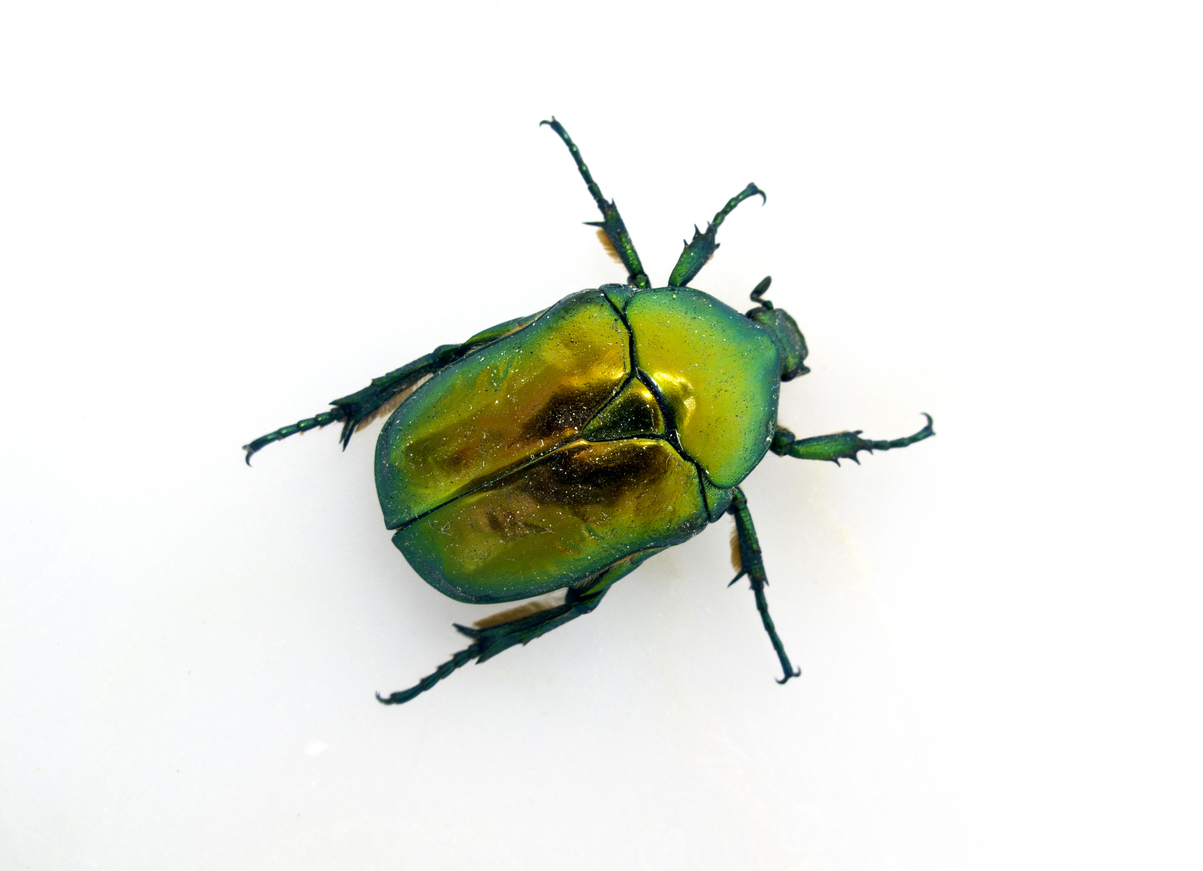
Known for its iridescent and metallic green hue, the green June beetle can measure anywhere from ¼ inch to 2 inches long. This bug enjoys munching on fruit, especially figs. Japanese beetle (Popillia japonica)
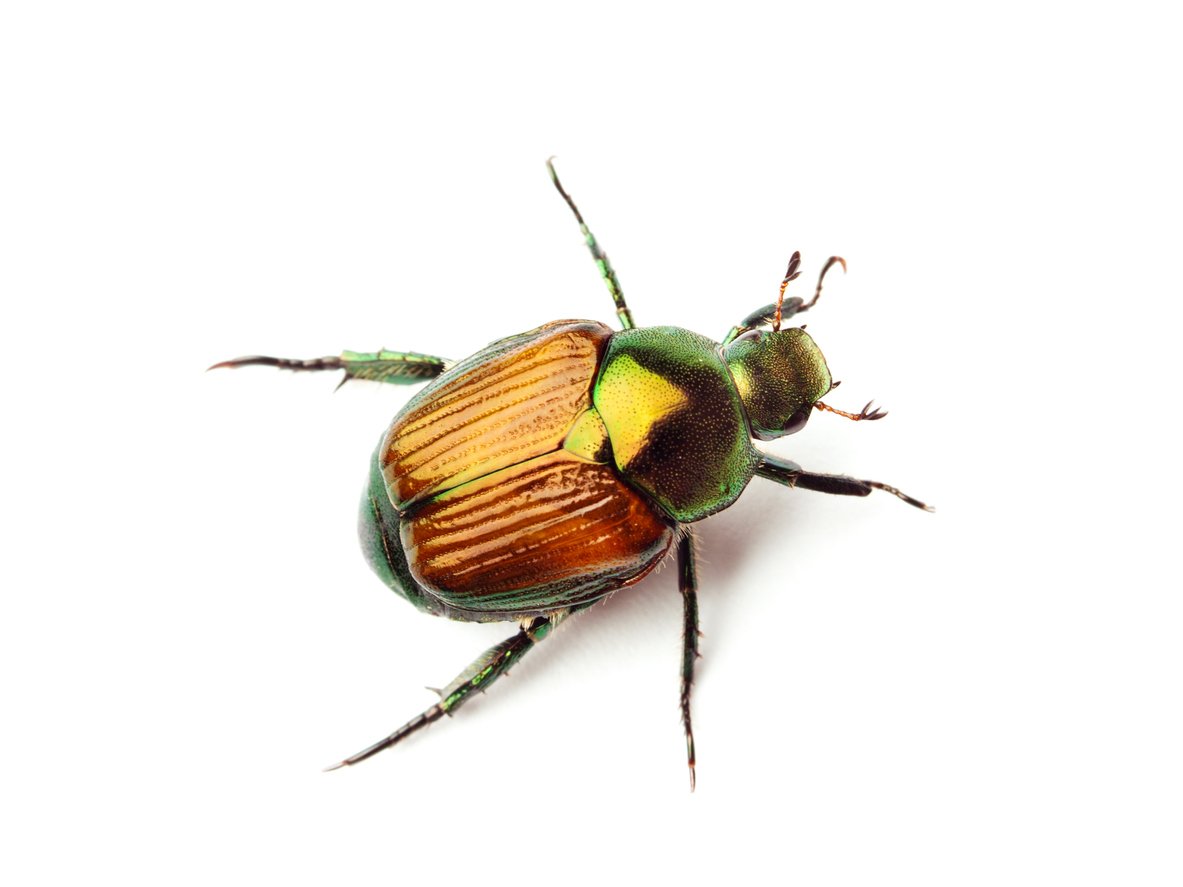
The Japanese beetle is an invasive species in North America and typically measures around ½ inch long. They are known for their vibrant metallic green body and copper-colored wings. These little pests can cause serious damage to your flowers, trees, and other plants, and the larvae (white grubs) usually feed on grass roots, often destroying large grassy areas like parks and lawns. Southern masked chafer (Cyclocephala lurida)

The southern masked chafer have grubs that thrive on turfgrasses. The adults do not typically feed. Adult southern masked chafers have sparse hair and are typically about ½ inch long.
The Life Cycle of June Bugs
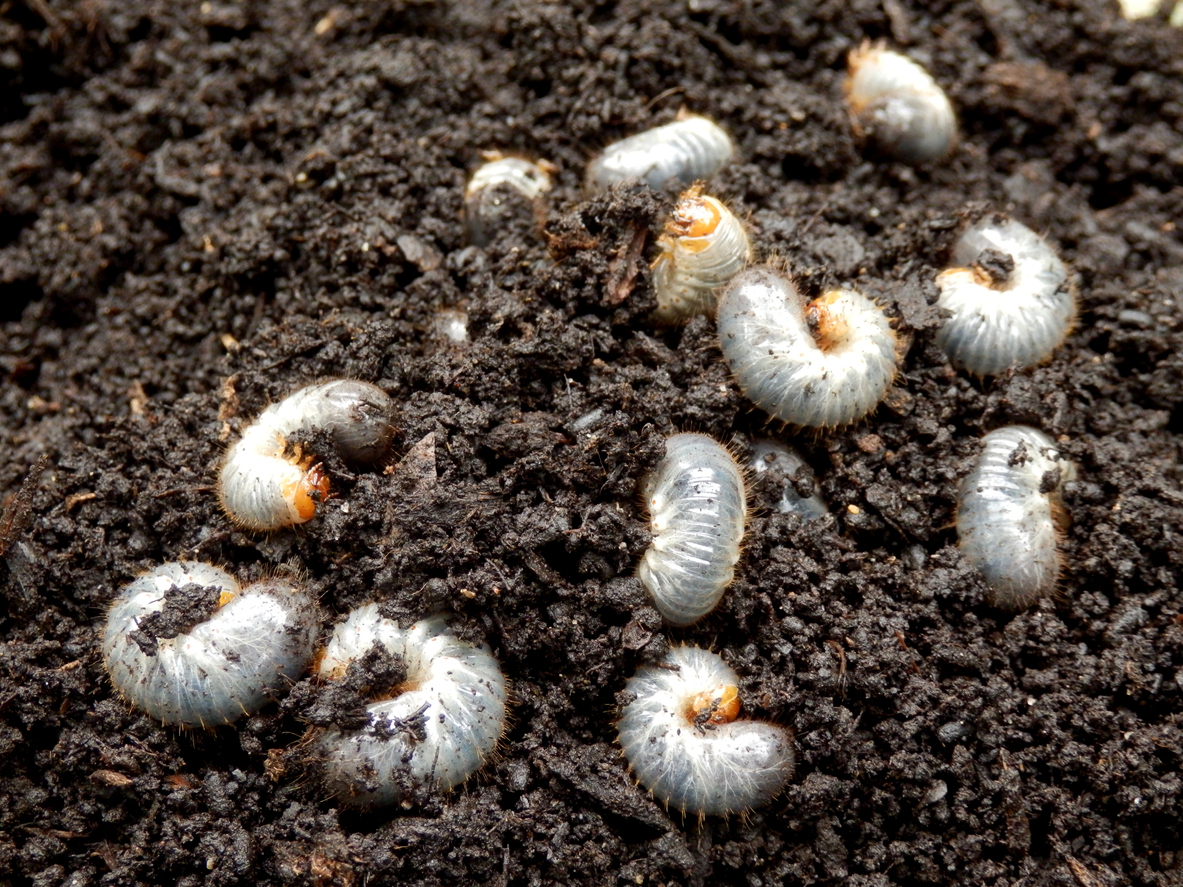
While you might only be focused on one part of a June bug’s life cycle–the end–and thinking to yourself, “How long do June bugs live?” understanding your enemy from cradle to grave is key to eliminating them.
- Female June bugs lay between 50 to 100 eggs in early summer. Larvae come out of the eggs after about 18 days as 1-inch worms with brown heads. Although they are technically babies, this is when they do the bulk of their damage.
- These grubs spend up to three years underground chewing on the roots of your precious plants and grass.
- During the winter they hibernate underground before re-emerging in the spring to continue their feast.
- Eventually they form pupae and hatch into adult beetles in the late spring.
- In late summer, they burrow into the ground to lay their eggs, creating a new generation of June bug grubs to feast on the fruits of your gardening efforts.
- By late fall, the adults begin dying off.
While we associate June bugs with the flying insects we see in the summer, the real culprits are beneath the surface of your yard.
RELATED: 13 Time-Tested Tricks for a Bug-Free Backyard
Causes of June Bug Infestations
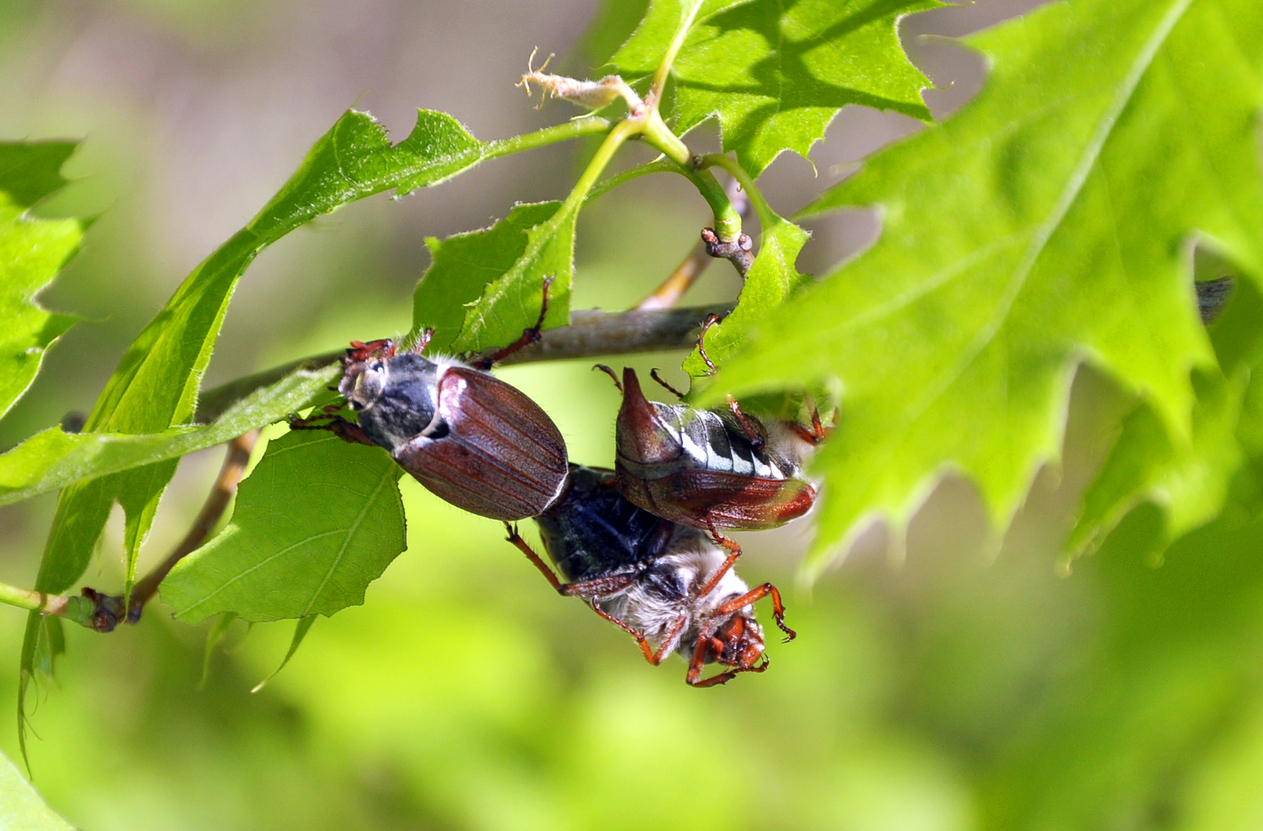
If you have a large infestation of grubs in your yard, you’ll see more adult June bugs in late spring and early summer. While grubs can be attracted to any yard, they thrive in those that are not well maintained.
- Yards with a significant amount of thatch on them help to shield grubs from their natural predators, allowing them to thrive.
- Your efforts to eliminate other insects might also be contributing to their proliferation. Wasps, for example, are natural predators of grubs. By taking out a wasps nest, you might be inadvertently helping your grub population.
- The height of your lawn can also have an impact. Adult June bugs like to lay their eggs in short grass so setting the mower to a low setting might be making it easier for them to multiply.
Tools & Materials
Bobvila.com may earn a commission from purchases made through these links.
Project Overview
Working Time: 10 to 15 minutes
Total Time: 20 minutes
Skill Level: Beginner
Estimated Cost: $5 to $15
Before You Begin
While planning for your assault on June bugs, keep a few important caveats in mind. While some methods, such as traps, don’t present hazards to humans or pets, some of the methods below involve using pesticides that can be harmful to humans. With that in mind, it’s important to protect yourself by wearing rubber gloves and a mask. While these methods may be suitable for treating yards, shrubs and bushes, don’t use pesticides on your vegetable garden. Ahead, learn about how to get rid of June beetles.
How to Get Rid of June Bugs
Step 1: Remove the adult bugs.
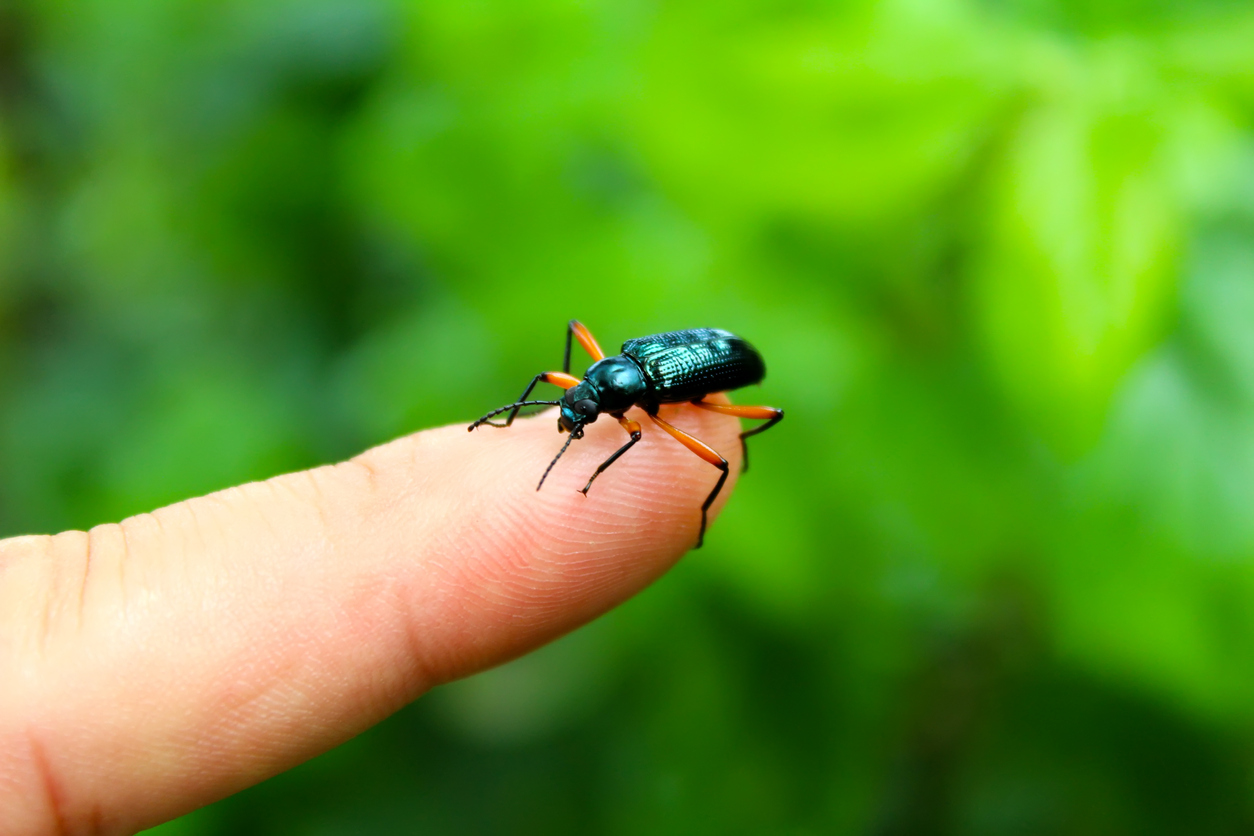
While a June bug repellent might keep these insects from annoying you, it won’t stop them from infesting your lawn. Female June bugs lay eggs in the grass in midsummer, so destroying the adults before they get a chance to do so will not only help your shrubs look better this season, you’ll also have a head start on a healthier lawn next spring.
- Set a June bug trap overnight. To attract and effectively drown June bugs, pour one-half cup of molasses into an empty milk jug or large jar, add one-half cup of hot water, then cover and shake well. Bury the open jar near rose bushes or other plants that the little buggers fancy, leaving only the neck of the jar above the soil. Check the trap each morning and dispose of any drowned beetles. Refill the trap as necessary.
- Catch them by hand. Since these pests generally move slowly, it’s fairly easy to get rid of June bugs by plucking them off shrubs and dropping them into a jar of soapy water to drown them. Be sure to wear gloves when hunting June bugs. Although they don’t bite, some species have sharp spikes on their legs that can scratch.
- Make a natural insecticide. Kill Japanese beetles and other June bugs with a safe, do-it-yourself insecticide. Mix four cloves of minced garlic with one tablespoon of mineral oil and let it sit overnight. Then strain out the garlic bits, add the garlic oil to a pint of water, and mix in one teaspoon of mild liquid dish soap. Put two tablespoons of this concentrate into a pint spray bottle, fill with plain water, and spray directly onto June bugs and any plants showing evidence of their munching.
- Attract predators. Many insect-eating birds, toads, and snakes enjoy a good meal of June bugs. Encourage these visitors by providing water—a birdbath for birds, a shallow dish of water for toads and snakes—as well as safe spots for your foraging friends to hide when necessary. Birds appreciate the cover of shrubs and trees, while toads and snakes prefer a damp, cool, shady spot to hide in the heat of the day. Attract these helpful amphibians and reptiles to your garden by building them a simple home. Place an overturned terra-cotta pot in the garden and prop up one side with a stick or rock to create an opening for an entrance.
- Try a commercial insecticide. If natural methods fail, there are insecticides that kill adult June bugs, along with most other destructive garden pests. As these products can be harmful to humans and pets, it’s best to try natural methods before resorting to them.
Step 2: Get rid of the grubs.
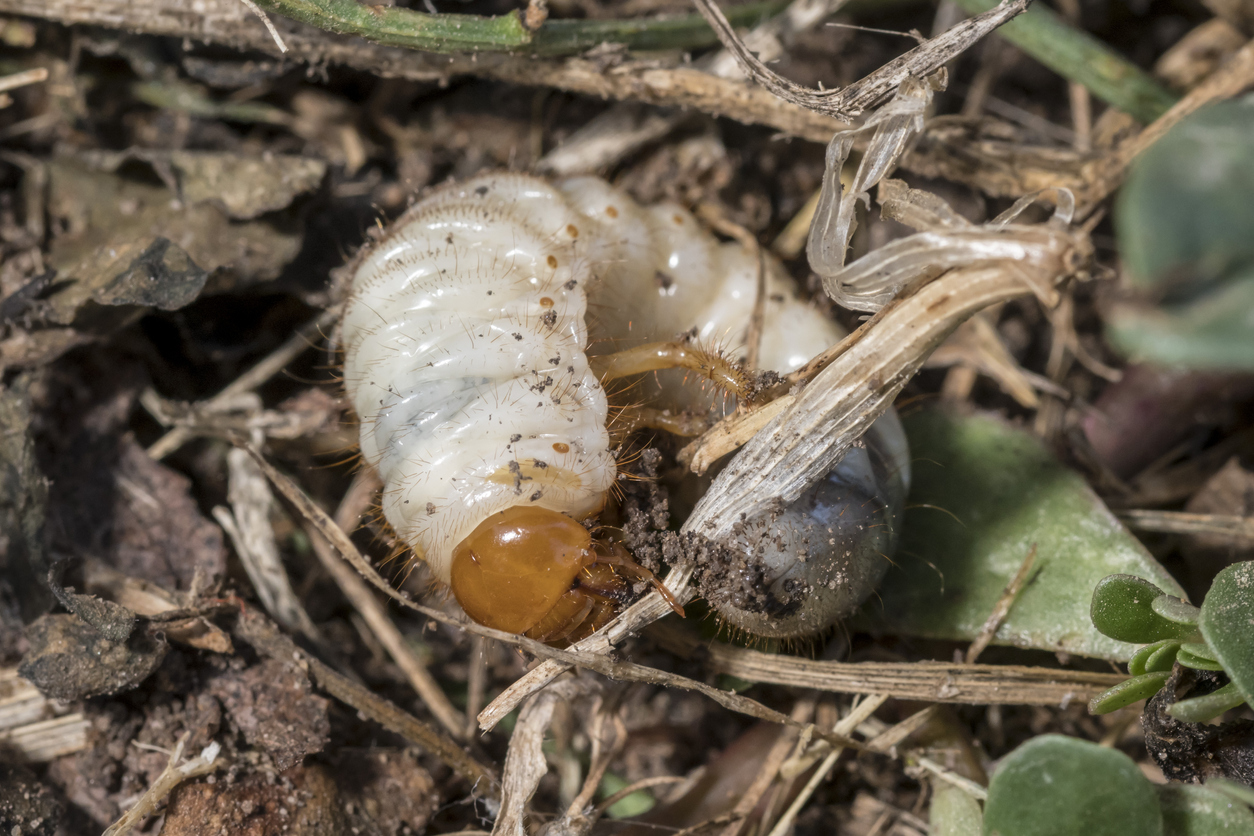
While adult June bugs can wreak havoc on roses and other shrubs during their brief summer fling, it’s the grubs that will get your grass. Lose the larvae with the following methods:
- Don’t mow too low. Female June bugs like to lay their eggs in short grass, so you can discourage them by not mowing your lawn too short. Keep the grass at least three inches tall during their early-to-mid-summer active season.
- Let nematodes fight your battle. Beneficial microscopic worms called nematodes attack and eliminate grubs in your lawn. You can buy nematodes online or at most large garden centers. Just mix as directed, spray your affected lawn, and let the worms work their magic.
- Bring on the bacteria. Bacillus thuringiensis, usually abbreviated as Bt, is bacteria that infects and kills many garden pests, including June bug grubs, yet is harmless to humans and pets. You’ll usually find Bt sold as a liquid concentrate or a powder to spray or sprinkle directly onto affected plants and turf. You might need to reapply Bt weekly if the infestation is heavy.
- Apply insecticide. If the above methods don’t do the trick to get rid of grubs, there are potent insecticides that will. Many are made from neem oil, which kills many types of larvae but is generally safe for beneficial insects like bees and ladybugs. If a neem-based insecticide fails, there are stronger—but more toxic—pesticides to try. Apply these late in the summer, when the grubs are still close to the surface of the soil. Once winter arrives, the grubs will burrow deep underground, where a pesticide is unlikely to affect them.
RELATED: 6 Things to Know Before Spraying Insecticide
How to Prevent June Bugs From Colonizing
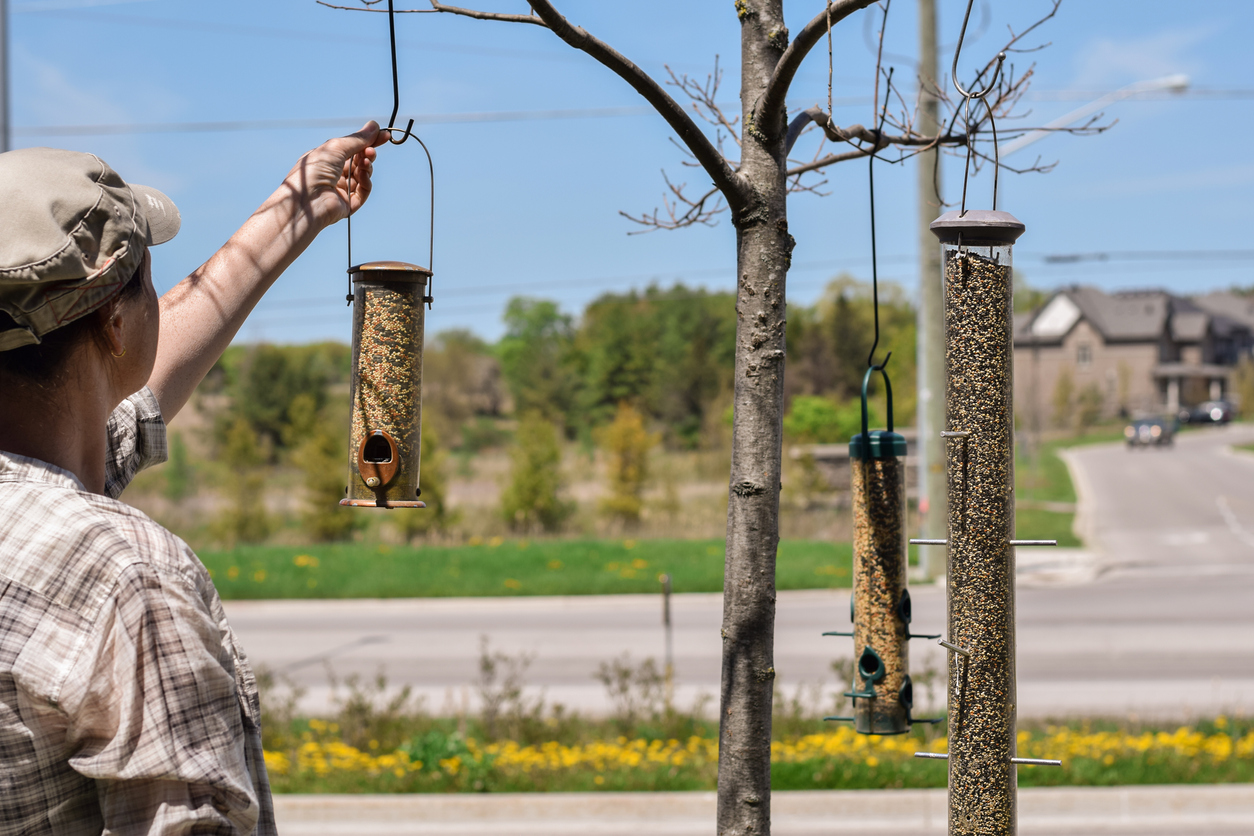
Wondering how to keep June bugs away from your yard? There are a couple of measures you can take to make your yard less habitable for the adults and their destructive offspring.
- First, make an effort to maintain your yard properly. Dethatch your yard periodically to expose any grubs to predators. Since June bug adults like laying eggs on shorter grass, keep your yard at a height of 3 to 4 inches.
- Attract predators to your yard that will help you get rid of June bugs. Many birds eat grubs, so encourage them to visit your yard by setting up bird feeders, water sources, and birdhouses. Note: While you may view wasps as a threat, they are natural predators of grubs. When you see a wasp hovering over your yard, it’s often because they are hunting for grubs. While you shouldn’t allow wasps to nest on or in close proximity to your home, many types of wasps are considered beneficial insects and should be left alone to help eliminate grubs and other pests from the yard.
Final Thoughts
When battling a June bug invasion, it’s important to keep a few important points in mind. While natural methods are the preferred option, they don’t always work. If you opt to use a pesticide, be sure to protect yourself when applying hazardous chemicals and never use pesticides on edible plants.
While focusing your efforts on eliminating the larvae that are far more destructive to your lawn and garden is a good strategy, don’t forget about the adults. By eliminating the adults, you can reduce the number of grubs that hatch in the spring.
FAQs
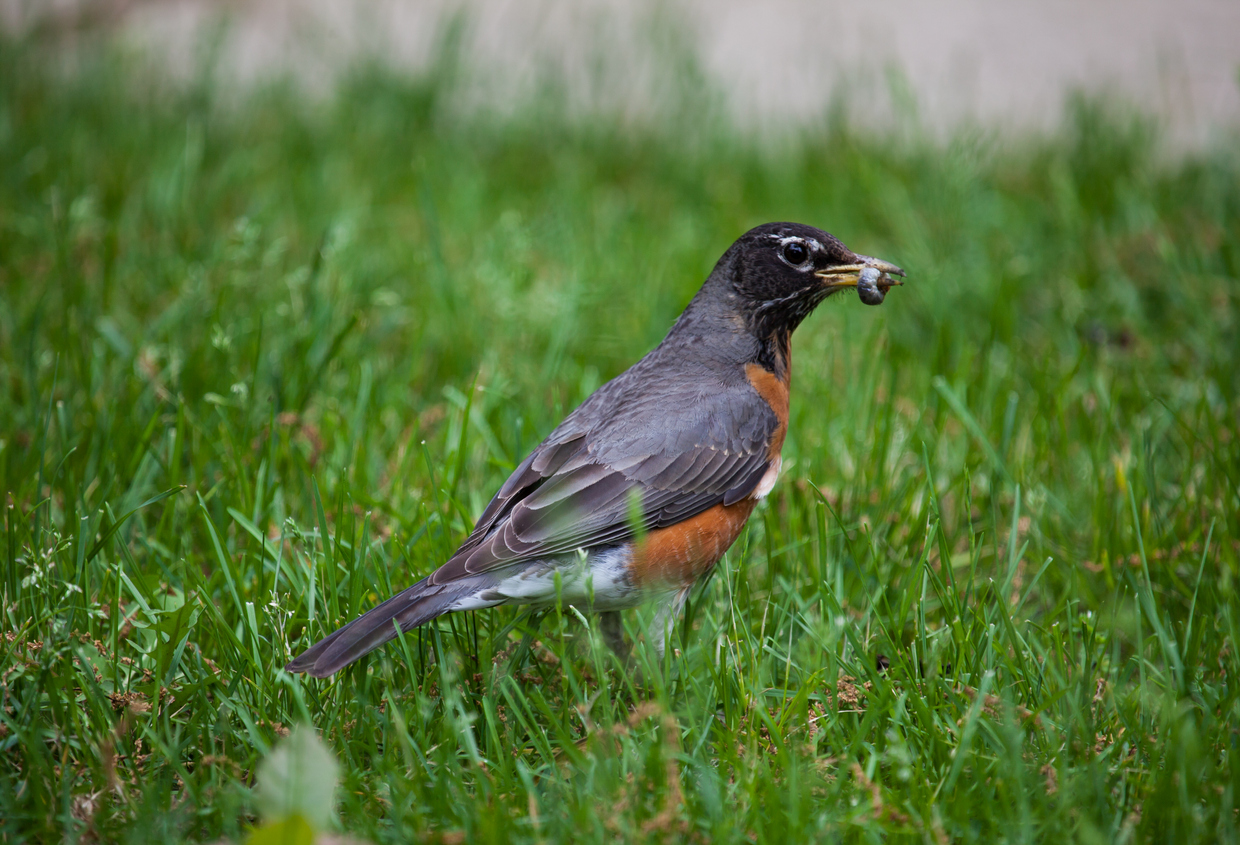
Q: Where do June bugs go during the daytime?
June bugs are active mainly at night and hide under leaves or in the cracks and crevices of tree bark during the day.
Q: What purpose do June bugs serve?
While June bugs may be an annoyance to you, they actually serve an important part of the ecosystem around your home. June bugs are part of the diet of other organisms living in your yard, including insects, birds, and some mammals.
Q: Are June bugs invasive?
That depends on what you consider a June bug. The common brown June bug is native to the United States and therefore not an invasive species. However, in some parts of the country people refer to the shiny green Japanese beetle, which is an invasive species, as a June bug.
Q: Do June bugs make noise?
June bugs make an odd hissing noise when distributed or touched, which is caused by the sound of air being forced out of their back as their wings push against their bodies.
